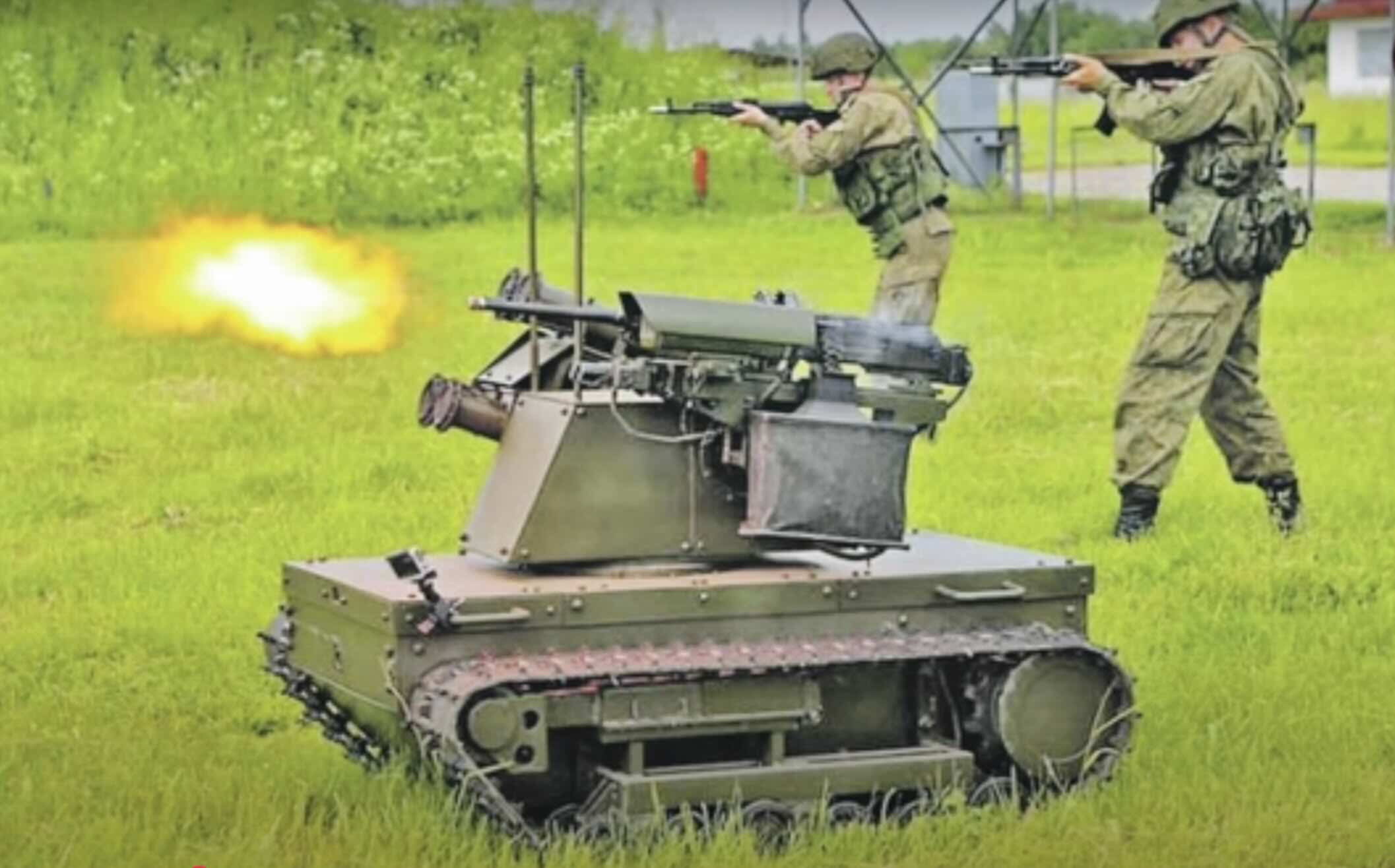


The brigade reported that the systems supported an assault that resulted in Russian personnel being killed or captured and in the recapture of several positions around the villages of Hruzke and Vesele. The video, filmed from an observation drone, shows small tracked or wheeled platforms advancing along streets, taking firing positions, and engaging buildings where Russian troops had sought cover.
Ukrainian outlets that published the footage attributed the use of ground-based “robotic strike systems” to the 93rd Brigade’s reconnaissance elements working alongside artillery and multiple categories of unmanned systems. Reporting by Ukrainska Pravda, LIGA.net and other media said the robots closed to short range and delivered bursts of fire into identified targets, after which Ukrainian assault groups moved in to secure the area and take prisoners. The precise number of Russian personnel detained was not disclosed.
The engagement formed part of fighting on the Pokrovsk–Dobropillia axis in mid-August. According to Ukrainian sources, Russian forces had achieved a temporary penetration in the area earlier in the month, prompting a series of Ukrainian counter-attacks. Geolocated updates from open-source monitors and official statements indicated that Ukrainian units retook Hruzke and Vesele between 15 and 17 August. The 93rd Brigade’s release situates the ground robots as one element of these actions.
Operationally, the Commander-in-Chief of the Armed Forces of Ukraine, General Oleksandr Syrskyi, stated on 15 August that Ukrainian forces were strengthening defences in the Pokrovsk and Dobropillia sectors, describing the situation as difficult but manageable. His comments followed several days of intense combat across Donetsk Oblast as both sides manoeuvred for tactical advantage. The timing aligns with the 93rd Brigade’s publication of the ground-robot footage.
The systems shown in the video are unmanned ground vehicles (UGVs) configured as remote weapon stations on compact platforms. Ukraine has progressively fielded such systems since 2024, including tracked Droid TW 12.7 variants carrying 12.7mm machine guns, intended for direct fire support in high-risk approaches where infantry would face elevated casualty risks. These UGVs are typically tele-operated from a covered position and paired with aerial drones for target identification and battle damage assessment.
Beyond ad hoc battlefield adaptations, Ukraine has pursued a broader programme to scale ground robotics. In April, Business Insider reported that Kyiv tested several fibre-optic-controlled UGVs designed to resist electronic-warfare jamming by using tethered links rather than radio. Officials involved in the government-backed Brave1 initiative said thousands of UGVs were planned for acquisition in 2025, with roles ranging from direct fire to logistics and casualty evacuation. Separately, The Defense Post reported in June that a multi-purpose UGV called “Dodger” was slated for fielding in the second half of 2025.
The 93rd Brigade’s operation near Dobropillia therefore reflects an ongoing shift in Ukrainian tactics: integrating ground robots with reconnaissance drones and conventional fires to reduce exposure of assault troops in urban or semi-urban terrain. Media that reviewed the released footage assessed that the use of UGVs at close range contributed to dislodging Russian elements that had occupied residential structures, after which Ukrainian personnel entered to secure prisoners. Such accounts remain based on Ukrainian military reporting and video evidence.
The Pokrovsk–Dobropillia sector has been among the most contested fronts in recent weeks, with Russian forces attempting to press west of Avdiivka toward logistics hubs and Ukrainian units conducting local counter-attacks to restore lines. The Institute for the Study of War has noted the intensity of fighting around Pokrovsk in August, while Ukrainian and international media have described rapid changes in control of individual settlements. In this context, the introduction of armed UGVs at the tactical edge offers a means of conducting short-notice assaults and clearing actions under persistent aerial observation.
Ukraine and Russia have both experimented with UGVs since the full-scale invasion began, but sustained combat use remains limited and highly situational. Ukraine’s approach has emphasised modularity, low cost, and rapid iteration with front-line feedback. The Dobropillia footage suggests a maturing concept of employment: UGVs advance under drone overwatch to deliver suppressive fire into precise aimpoints, enabling follow-on infantry to close without crossing open ground under direct fire. Whether this will scale beyond discrete engagements will depend on production, training, and the ability to maintain reliable control links in contested electromagnetic environments.
As with other emerging systems in the war, the immediate effect is tactical. The 93rd Brigade’s release indicates that ground robots were one of several tools—alongside reconnaissance units, artillery and aerial drones—used to retake positions near Dobropillia in mid-August. Their employment illustrates how both sides are adapting to dense surveillance, short engagement cycles and high attrition, with unmanned platforms increasingly taking on roles at the point of contact.
Ukraine’s Commander-in-Chief: “We must always be prepared for war with Russia”